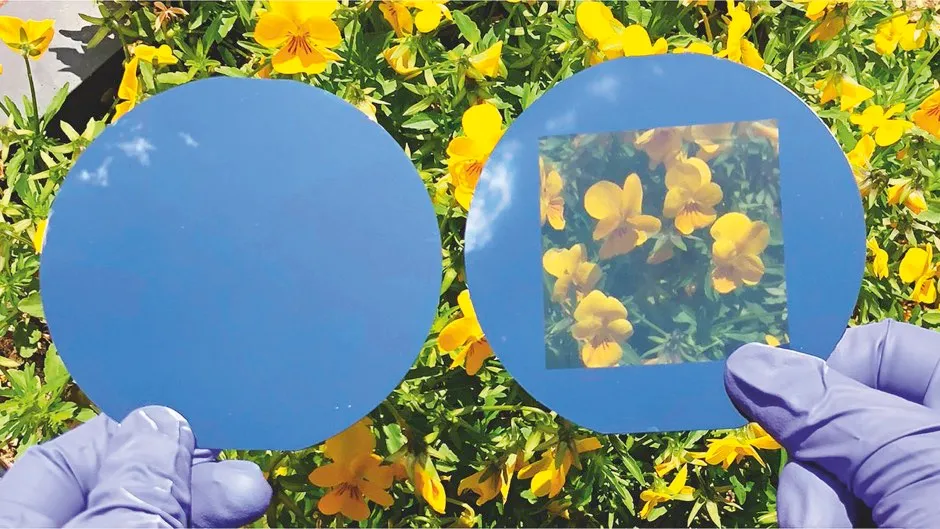Conventional solar cells can be rendered see-through by puncturing them with holes thinner than the width of a human hair. The team behind the breakthrough hopes that the tech could one day be used to build office blocks that are powered by their windows.
Most solar cells sat on top of household roofs are opaque. The darker they are, the better they absorb solar energy. They’re mostly made out of a glass-like material called crystalline silicon, which is stable and efficient.
Filling the surface area on top of a house with these cells can provide enough energy to power what’s inside, but the same isn’t true of a tower block or skyscraper where the roof is only a small proportion of its surface area.
To remedy this problem, researchers at South Korea’s Ulsan National Institute of Science and Technology have been searching for a way to create windows that can harvest the Sun’s energy, as it could drastically reduce the carbon footprint of these energy-hungry buildings.
The team discovered that if they punched tiny holes into crystalline silicon cells, in patterns undetectable to the human eye, they could render them as transparent as tinted glass while only reducing their efficiency by a small amount.

Traditional photovoltaic cells achieve 20 per cent efficiency, while these new cells manage 12 per cent – substantially better than the 3 to 4 per cent achieved by other transparent cells. “At first thought, it was a crazy idea for all of us,” says Kwanyong Seo, co-senior author on the paper published in the Joule journal.
Read more about renewable energy:
- The Orkney Islands: The energy revolution starts here
- Marine cultivation technology opening the door to the rich sources of clean energy in our oceans
The ultimate goal is to scale the technology up and limit the increasing demand that skyscrapers and tower blocks put on the power grid. “We want to replace windows,” says Seo.
“There are many things we have to overcome, such as the regulations by law. We need to have the mechanical stability and strength to replace current windows in buildings.” On top of that, Seo and his colleagues will have to come up with a way to conceal the electrodes through which the harvested electricity will leave the solar cell.
Reader Q&A: Do solar panels work better on hot days?
Asked by: Liam Farmer, Birmingham
Surprisingly, they perform worse as the temperature rises! Solar panels work by using incoming photons to excite electrons in a semiconductor to a higher energy level. But the hotter the panel is, the greater the number of electrons that are already in the excited state. This reduces the voltage that the panel can generate and lowers its efficiency.
Higher temperatures also increase the electrical resistance of the circuits that convert the photovoltaic charge into AC electricity. Modern hybrid solar panels are designed to suffer less from the heat, but they can still lose 10 per cent of their rated efficiency on hot days.
Read more:
